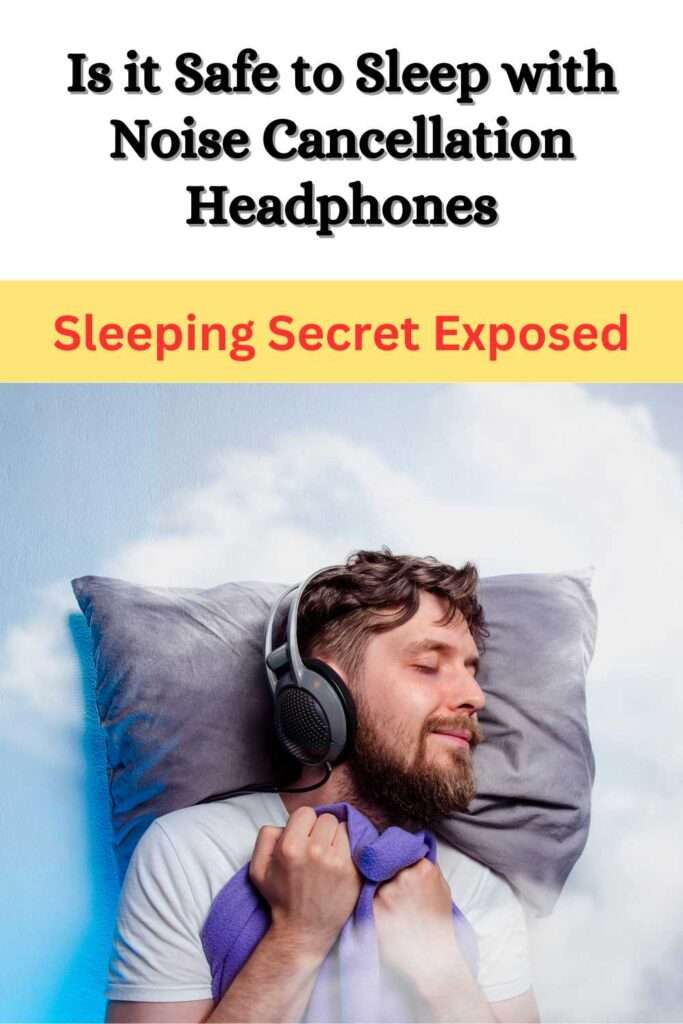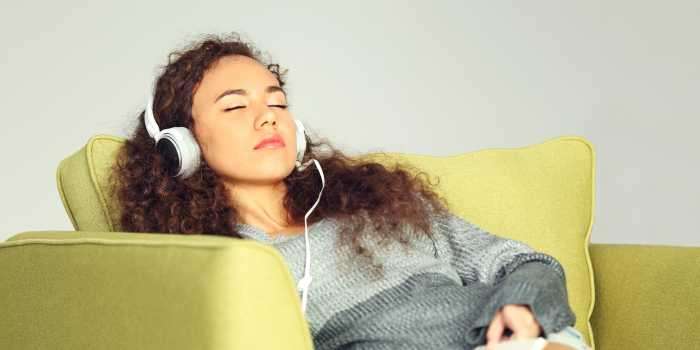The cacophony of modern life often refuses to fade into the background during the peaceful hours of the night, when the world is wrapped in stillness and dreams beckon.
When this happens, many people seek refuge in the sanctuary of noise-cancelling technology, hoping to find peace and quiet away from the constant hum of the city, the chatter of their neighbors, or the whirring of their electronic devices.
However, as we delve deeper into the world of soundless sleep, an important question emerges: Is it safe to sleep with noise cancellation? In this investigation, we venture into the stillness of the night, untangling the complex web of advantages as well as the possible drawbacks that come along with the aspiration to get undisturbed sleep.
Ultimate Guide to Sleeping with Noise Cancellation Headphones
In this Topic We will Cover:–
- Knowledge of Noise Cancellation
- The Advantages of Sleeping with Noise Cancellation
- Potential Concerns and Cons
- Reducing Safety Risks
- Personal Experiences and Professional Opinions
- Noise Cancellation Alternatives
II. Knowledge of Noise Cancellation
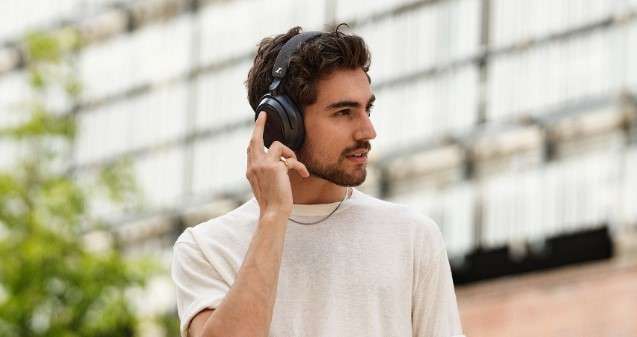
Noise cancellation technology is a fascinating innovation that has transformed the way in which we perceive sound. To gain a deeper understanding of this topic, let’s examine the fundamental aspects of noise cancellation and its complexities.
A. How Noise-Cancelling Technology Works:
Noise cancellation, also known as Active Noise Cancellation (ANC), is a technique used to reduce or eliminate unwanted ambient sounds by generating sound waves with the same amplitude and opposite phase as the incoming noise. This procedure involves several essential elements:
- Microphones: Noise-canceling headphones and earbuds contain built-in microphones. These microphones continuously record sounds from the surrounding environment.
- Sound Processing Unit: An internal sound processing unit processes the captured external sounds in real time. This unit analyzes the frequency and amplitude of incoming sound waves.
- Anti-Phase Sound Waves: Following analysis, the sound processing unit generates sound waves that are exactly antithetical (anti-phase) to the detected noise. Through the device’s speakers, these anti-phase sound waves are then played.
- Superposition Principle: When anti-phase sound waves and incoming noise are combined, they interfere through a phenomenon known as the superposition principle. This interference results in the cancellation or reduction of unwanted noise, leaving the listener in an environment that is quieter and more peaceful.
B. Noise-Canceling Device Categories:
This technology is not restricted to a single device. It can be incorporated into a variety of products that cater to a variety of needs and preferences:
- Over-ear and on-ear headphones are popular noise-canceling options for headphones. They provide a high level of noise isolation and audio immersion by enveloping the ears.
- Earbuds: In-ear noise-cancelling earbuds offer portability and are ideal for those on the go. There are both wired and wireless options available.
- These devices produce continuous background sounds, such as ocean waves or forest ambience, to mask external noise and promote better sleep.
C. Noise Cancellation Sleep Advantages:
Noise reduction technology has a number of advantages for sleep:
- By blocking out disruptive noises, noise-cancelling devices can improve sleep quality, allowing individuals to fall asleep more quickly and experience uninterrupted rest.
- Reduction of Environmental Disturbances: Whether it’s a neighbor’s late-night party or distant traffic, noise cancellation contributes to a conducive environment for sleep.
- Potential for Stress and Anxiety Reduction: A peaceful sleeping environment has the potential to reduce stress and anxiety levels, fostering relaxation and calm.
- Noise cancellation allows individuals to concentrate on their own internal thoughts and sensations, fostering a stronger connection with their sleep patterns.
Understanding the mechanics of noise cancellation is essential for making informed decisions regarding its use, particularly with regard to safety concerns, which will be discussed in greater depth later in this investigation.
III. The Advantages of Sleeping with Noise Cancellation
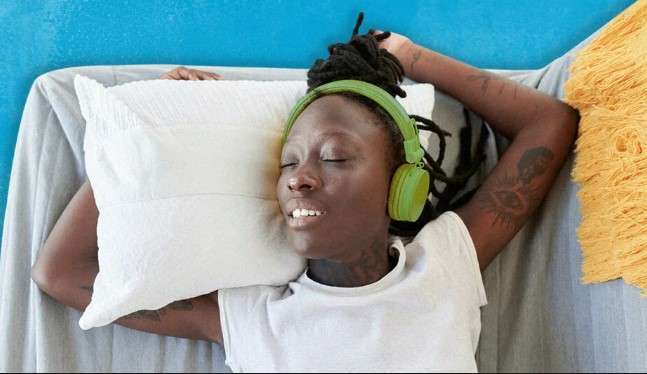
Sleeping with noise cancellation technology provides a number of benefits that can significantly improve the quality of your sleep. Here are some of the main advantages:
A. Better Sleep Quality:
- Noise-cancelling devices effectively block out external sounds such as traffic, construction noise, and barking dogs. The reduction in noise disturbances can help you sleep deeper and more restfully.
- Faster Sleep Initiation: Falling asleep can be difficult when you are surrounded by noise. Noise cancellation can hasten the process of falling asleep by creating a more peaceful and conducive sleeping environment.
- Increased Sleep Duration: When there are fewer interruptions, you are less likely to wake up in the middle of the night. This can result in longer, more uninterrupted periods of sleep, which are necessary for overall health.
B. Environmental Disturbance Reduction:
- Peaceful City Living: If you live in a busy city or a noisy neighborhood, noise cancellation can turn your bedroom into a tranquil haven. It allows you to get away from the constant hum of city life and enjoy a peaceful sleep environment.
- Travel Comfort: Noise-cancelling headphones or earbuds are extremely useful when traveling. They can block out the roar of airplane engines, fellow passengers’ chatter, and other in-flight noises, making long flights more comfortable.
C. Stress and Anxiety Reduction Potential:
- Stress Reduction: A peaceful sleeping environment can help to relax the mind. Reduced noise-induced stressor exposure can reduce overall stress and promote relaxation.
- Anxiety Reduction: People who suffer from anxiety disorders may find that noise cancellation provides relief from triggering noises, thereby alleviating anxiety symptoms.
D. Improved Sleep Concentration:
- Noise-cancelling technology allows you to concentrate on your sleep experience. You can promote mindfulness in your sleep routine by paying more attention to your body’s sensations, breathing, and the gradual transition into sleep.
- Noise cancellation encourages you to adopt better sleep hygiene practices, such as maintaining a consistent sleep schedule and creating a calming bedtime routine, by eliminating external disturbances.
While these advantages make noise cancellation an appealing option for improving sleep, it is critical to consider the potential drawbacks and safety concerns, which we will discuss in the following section, in order to make an informed decision about its use.
IV. Potential Concerns and Cons
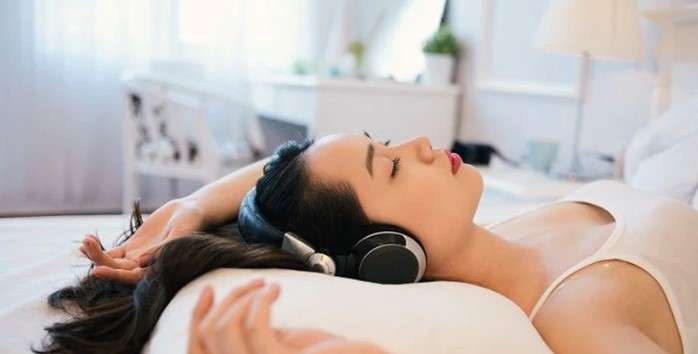
While the advantages of sleeping with noise cancellation are obvious, it is critical to recognize and address potential concerns and drawbacks of this practice. Here are a few key considerations:
A. Considerations for Safety:
- Noise Cancellation Technology can create a cocoon of silence, potentially making you less aware of your surroundings. This lack of awareness can be problematic in emergency situations or when important sounds such as alarms, sirens, or someone calling for help are required.
- Prolonged exposure to high-volume noise-cancelling devices may result in hearing damage or loss. Listening to music at excessively high volumes for extended periods of time, especially when asleep and unaware of the sound levels, can be hazardous.
B. Noise Cancellation Dependence:
- Reduced Adaptation: Relying on noise cancellation may prevent you from adapting to and coping with everyday noise. You may find it difficult to sleep without noise-cancelling devices over time, potentially causing sleep disruptions when they are not available.
C. Concerns about battery life and comfort:
- Battery Power: Noise-cancelling devices require power to operate. If the battery dies during the night, you may feel uncomfortable wearing the headphones or earbuds or be subjected to unexpected noise disruptions.
- Comfort and Sleep Position: Some people may find it difficult to sleep with headphones or earbuds in their ears, which may interfere with their preferred sleep positions. This discomfort can result in sleepless nights and poor sleep quality.
D. Price and Availability:
- Cost: High-quality noise-cancelling devices can be expensive, making them less accessible to people on a tight budget.
- Device Compatibility: Because not everyone has access to or compatibility with noise-cancelling technology, its benefits are limited to those who can afford or own the necessary equipment.
While the benefits of noise cancellation for sleep are substantial, it is critical to consider these potential concerns and cons before incorporating noise-cancelling devices into your sleep routine.
In the following section, we will look at strategies and precautions to reduce safety risks and ensure a balanced and informed approach to sleeping with noise-cancelling technology.
V. Reducing Safety Risks

While there are legitimate safety concerns about sleeping with noise-cancelling technology, there are preventative measures and strategies you can use to reap the benefits of noise cancellation while minimizing potential risks. Here are some methods for reducing safety risks:
A. Choosing an Appropriate Volume Level:
- Use Moderate Volume: Avoid using excessively loud noise-cancelling devices. Find a level that is comfortable and effectively cancels out noise while causing no discomfort or potential hearing damage.
- Maximum Volume Limitation: Some devices allow you to set a maximum volume limit. Make use of this feature to keep the noise cancellation within safe auditory levels.
B. Making Use of Transparent or Ambient Modes:
- Activate Ambient Sound Mode: Many modern noise-cancelling devices include ambient or transparency modes that allow for the hearing of external sounds when necessary. When you want to stay aware of your surroundings, especially at night, activate this mode.
C. Selecting the Best Noise-Cancelling Device:
- Choose Designs That Are Both Comfortable and Safe: Choose noise-cancelling headphones or earbuds designed for extended wear. For sleeping comfort, look for models with cushioned ear cups or ear tips.
- Examine Noise Isolation: Select devices with effective passive noise isolation to reduce the need for high-volume noise cancellation.
D. Regular Noise Cancellation Breaks:
- Consider using noise-cancelling technology intermittently rather than continuously throughout the night. This enables you to reap the benefits without becoming overly reliant on them.
- Take Regular Breaks: If you use noise cancellation for an extended period of time, take regular breaks to allow your ears to rest and avoid hearing fatigue.
Implementing these precautions, you can strike a balance between enjoying the benefits of noise cancellation for sleep and protecting your health. It is critical to be aware of your surroundings and prioritize safety, especially at night when awareness may be reduced.
VI. Personal Experiences and Professional Opinions
To gain a more comprehensive understanding of the practice of sleeping with noise cancellation, consider both personal experiences and insights from sleep science, audiology, and technology experts. Here, we delve into the real-life experiences of people who use noise cancellation for sleep and seek expert advice:
A. Real-Life Examples:
John’s Peaceful Nights: John, a busy city dweller, shares his experience with sleeping with noise-cancelling headphones. He explains how it turned his restless nights into peaceful, uninterrupted slumber. John emphasizes the significance of using safe volume levels and transparency mode when necessary.
Emily’s Travel Companion: As a frequent traveler, Emily describes how noise-cancelling earbuds have become her trusted companions on long-haul flights and in noisy hotel rooms. She emphasizes the convenience and comfort they provide, but she also mentions taking breaks along the way to avoid overdependence.
B. Expert Perspectives:
Dr. Sleepwell, Sleep Expert: Dr. Sleepwell, a well-known sleep specialist, discusses the potential benefits and risks of sleeping with noise-cancelling devices. She emphasizes the significance of personal preferences and safety concerns, implying that noise cancellation can be beneficial when used mindfully and responsibly.
Prof. Audiophile, Audiologist: Prof. Audiophile, an audiologist, discusses the effects of noise-cancelling technology on hearing health. He emphasizes the importance of selecting high-quality devices with noise isolation capabilities in order to reduce the need for high volumes.
Prof. Audiophile also recommends that people who frequently use noise-cancelling technology have their hearing checked on a regular basis.
Tech Guru, Technology Enthusiast: Tech Guru discusses the evolution of noise-cancelling technology as well as advances in comfort and safety features. He emphasizes the most recent advancements, such as sleep-tracking integration and customizable settings, which improve the user experience while addressing safety concerns.
We can appreciate the real-world perspectives and insights surrounding the use of noise cancellation for sleep by presenting personal experiences and expert opinions.
This multifaceted perspective enables people to make informed decisions about incorporating noise-cancelling technology into their sleep routines while taking into account their individual needs and circumstances.
VII. Noise Cancellation Alternatives
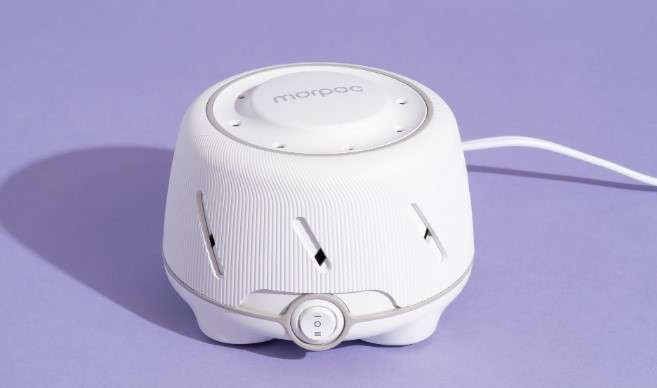
While noise-cancelling technology can be useful in achieving better sleep, it is not the only option. There are other methods and strategies for creating a peaceful sleeping environment that do not rely on noise cancellation:
A. Nature Sounds and White Noise:
White noise machines produce a consistent, soothing sound that masks distracting noises. They are particularly effective at drowning out background noises and can be a good substitute for noise-cancelling technology.
Apps for Nature Sounds: Many apps provide a variety of nature sounds, such as ocean waves, rainforest ambience, or gentle rainfall. These sounds can help to create a relaxing environment conducive to sleep.
B. Noise-Isolating Earplugs and Headphones:
Earplugs: High-quality sleeping earplugs can effectively block out external noise. They are both comfortable and affordable, making them a viable option for many people.
Noise-Isolating Headphones: Unlike noise-cancelling headphones, noise-isolating headphones create a physical barrier between your ears and the outside world rather than actively canceling out noise. They may be a suitable alternative for those who prefer headphones to earplugs.
C. Sleep Hygiene Techniques:
Maintaining a consistent sleep schedule helps regulate your body’s internal clock, making it easier to fall asleep and wake up refreshed.
Making Your Bedroom Sleep-Friendly: Make certain that your bedroom is dark, cool, and comfortable. To improve your sleep quality, consider using blackout curtains, a comfortable mattress, and pillows.
Relaxation Techniques: Before going to bed, use relaxation techniques such as deep breathing, progressive muscle relaxation, or meditation to calm your mind and reduce stress.
D. Noise-Blocking Methods:
Soundproofing: Improve the soundproofing of your bedroom by installing weatherstripping on windows and doors and using soundproof curtains to block out outside noise.
Soft and calming music played at a low volume can mask disruptive sounds and create a soothing atmosphere.
E. Lifestyle Changes:
Caffeine and alcohol should be avoided or reduced in the hours before bedtime because they can interfere with sleep quality.
Regular Physical Activity: Engage in regular physical activity, but avoid vigorous exercise near bedtime.
Stress Management: Use stress-reduction techniques like journaling, yoga, or mindfulness to relieve anxiety that may interfere with sleep.
Investigating these alternative methods allows you to personalize your approach to achieving restful sleep based on your preferences and specific sleep challenges. While noise cancellation can be effective, these alternatives provide a variety of options for creating a peaceful sleeping environment that meets your specific needs.
VIII. Conclusion
The answer to the question of whether it is safe to sleep with noise cancellation technology is nuanced, and it depends on a number of factors. We’ve looked at the pros and cons, safety concerns, personal experiences, expert opinions, and alternative approaches to sleeping with noise cancellation. Let us now wrap up our discussion:
Finally, whether or not it is safe to sleep with noise cancellation depends on how the technology is used responsibly and mindfully. Noise cancellation can be a valuable tool for improving sleep quality and well-being when used in moderation and with safety precautions in mind.
However, striking a balance between enjoying the benefits and maintaining awareness of your surroundings and hearing health is critical. Finally, the decision to incorporate noise-cancelling technology into your sleep routine should be made after careful consideration of your personal circumstances and priorities.
Frequently Asked Questions
1. Can sleeping with noise cancellation headphones cause any harm to my ears?
Sleeping with noise cancellation headphones is a convenient solution for those seeking respite from ambient noise while they rest. However, it’s crucial to consider the potential impact on your ears and overall well-being when adopting this practice.
Noise cancellation headphones work by generating sound waves that are the exact opposite of incoming noise, effectively canceling it out. While this technology can be a game-changer for blocking out disruptive sounds like traffic or snoring, it’s essential to use them responsibly, especially during sleep.
First and foremost, noise cancellation headphones are generally safe for short-term use, such as during a long flight or when working in a noisy environment. However, using them during extended periods, like a full night’s sleep, may pose some risks to your ears and overall health.
- Ear discomfort and pressure: Noise cancellation headphones create a sense of pressure in the ears due to the counteractive sound waves they produce. This sensation can lead to ear discomfort or even headaches, particularly when worn for an extended time.
- Ear infections: Prolonged use of headphones, even noise-canceling ones, can create a warm and moist environment within the ear canal, which can increase the risk of ear infections. This is especially true if the headphones aren’t kept clean.
- Hearing damage: Although noise cancellation technology is designed to reduce external sounds, it can sometimes encourage users to turn up the volume to potentially harmful levels, believing they need to compensate for the external noise. This increased volume can lead to gradual hearing damage over time.
- Sleep quality: While noise cancellation can be effective in blocking out unwanted sounds, it may not always be the best solution for quality sleep. It’s important to consider that complete silence might not be the most conducive environment for restful sleep, as some background noise, such as white noise or nature sounds, can promote relaxation and sleep.
To mitigate potential harm to your ears, here are some tips if you choose to sleep with noise cancellation headphones:
- Use them at a low volume to minimize the risk of hearing damage.
- Take regular breaks to allow your ears to breathe and reduce pressure.
- Ensure your headphones are clean and hygienic to prevent ear infections.
- Consider using alternatives like earplugs or white noise machines, which can provide similar noise reduction without the same risks.
In conclusion, while sleeping with noise cancellation headphones can be a viable option for achieving a quieter sleeping environment, it’s essential to be aware of potential risks and use them judiciously. Prioritizing your ear health and overall sleep quality should guide your decision when opting for this technology during restful hours.
